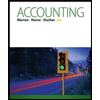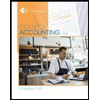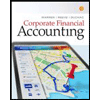
Stock investments: Stock investments are equity securities which claim ownership in the investee company and pay a dividend revenue to the investor company.
Fair value method: Fair value method is the accounting method used for accounting stock or equity investments which claim less than 20% of the outstanding stock of the investee company.
Debit and credit rules:
- Debit an increase in asset account, increase in expense account, decrease in liability account, and decrease in
stockholders’ equity accounts. - Credit decrease in asset account, increase in revenue account, increase in liability account, and increase in stockholders’ equity accounts.
To journalize: The stock investment transactions under the fair value method
Explanation of Solution
Prepare journal entry for the purchase of 4,000 shares of Company A at $50 price per share and a brokerage of $400.
| Date | Account Titles and Explanations | Post. Ref. | Debit ($) | Credit ($) | |
| September | 12 | Investments–Company A Stock | 200,400 | ||
| Cash | 200,400 | ||||
| (To record purchase of shares of Company A for cash) | |||||
Table (1)
Description:
- Investments–Company A Stock is an asset account. Since stock investments are purchased, asset value increased, and an increase in asset is debited.
- Cash is an asset account. Since cash is paid, asset account decreased, and a decrease in asset is credited.
Working Notes:
Compute amount of cash paid to purchase Company A’s stock.
Prepare journal entry for the dividend received from Company A for 4,000 shares.
| Date | Account Titles and Explanations | Post. Ref. | Debit ($) | Credit ($) | |
| October | 15 | Cash | 2,400 | ||
| Dividend Revenue | 2,400 | ||||
| (To record receipt of dividend revenue) | |||||
Table (2)
Description:
- Cash is an asset account. Since cash is received, asset account increased, and an increase in asset is debited.
- Dividend Revenue is a revenue account. Since revenues increase equity, equity value is increased, and an increase in equity is credited.
Working Notes:
Compute amount of dividend received on Company A’s stock.
Prepare journal entry for sale of 3,000 shares of Company A at $40 per share, and a brokerage of $200.
| Date | Account Titles and Explanations | Post. Ref. | Debit ($) | Credit ($) | |
| November | 10 | Cash | 119,800 | ||
| Loss on Sale of Investments | 30,500 | ||||
| Investments–Company A Stock | 150,300 | ||||
| (To record sale of shares) | |||||
Table (3)
Description:
- Cash is an asset account. Since cash is received, asset account increased, and an increase in asset is debited.
- Loss on Sale of Investments is an expense account. Since losses and expenses decrease equity, equity value is decreased, and a decrease in equity is debited.
- Investments–Company A Stock is an asset account. Since stock investments are sold, asset value decreased, and a decrease in asset is credited.
Working Notes:
Calculate the realized gain (loss) on sale of stock.
Step 1: Compute cash received from sale proceeds.
Step 2: Compute cost of stock investment sold Refer to Table (1) for value of cost of 4,000 shares.
Step 3: Compute realized gain (loss) on sale of stock.
Note: Refer to Steps 1 and 2 for value and computation of cash received and cost of stock investment sold.
Want to see more full solutions like this?
Chapter D Solutions
Corporate Financial Accounting - W/CENGAGENOW
- Companies have a significant amount of investment in long-lived assets, which include property, plant, and equipment (commonly referred to as plant assets); and intangible assets. We will also discuss different types of liabilities and understand how to account for and report those liabilities. What kind of plant assets are used in a specific company or place of business? What is the estimate of the amount invested in those specific plant assets?arrow_forwardWhat kind of plant assets are used in a spesific company or place of business? What is the estimate of the amount invested in those plant assets?arrow_forwardHAROUN COMPANY Comparative Income Statements For Years Ended December 31, 2021-2015 ($ thousands) Sales 2021 $ 1,659 2020 $ 1,453 2019 $ 1,322 2018 $ 1,212 2017 2016 2015 $ 1,131 $ 1,052 $ 862 Cost of goods sold Gross profit Operating expenses 1,193 466 356 971 835 731 679 635 506 482 487 481 452 417 356 278 255 188 163 161 134 Net income $ 110 $ 204 $ 232 $ 293 $ 289 $ 256 $ 222 HAROUN COMPANY Comparative Year-End Balance Sheets December 31, 2021-2015 ($ thousands) Assets Cash Accounts receivable, net Merchandise inventory Other current assets Long-term investments Plant assets, net Total assets Liabilities and Equity 2021 2020 2019 2018 2017 2016 2015 $ 104 746 $ 137 2,700 784 1,966 $ 143 710 1,718 $ 146 544 1,447 $ 151 479 1,300 $ 149 454 1,104 $ 154 320 801 69 62 38 69 58 59 31 0 Ө 0 3,305 3,292 2,879 $ 6,924 $ 6,241 $ 5,488 213 1,624 $ 4,043 213 1,680 213 213 1,493 1,281 $ 3,881 $ 3,472 $ 2,800 Current liabilities Long-term liabilities 1,742 1,862 $ 1,465 1,622 $ 961 1,578 Common…arrow_forward
- Mary carries on business as a sole proprietor that generated $100,000 in net accounting income. Included in this amount are: • $7,000 of amortization expense; • $4,000 for bad debt expense; • $112,000 cost of goods sold; and • $12,000 meals and entertainment with clients. Mary's maximum CCA has been calculated at $10,000 for the year. What is Mary's business income for income tax purposes? A. $113,000 B. $109,000 C. $107,000 D. $103,000arrow_forwardPlease explain the solution to this general accounting problem with accurate principles.arrow_forwardXDR Industries products a single product. The company's absorption costing income statement for April is as follows:arrow_forward
- Can you explain the correct methodology to solve this general accounting problem?arrow_forwardPlease explain the correct approach for solving this financial accounting question.arrow_forwardWhat price should sam pay for the bike if he think he can resell it for 9800 ? Solve ths general accounting questionarrow_forward
 College Accounting, Chapters 1-27AccountingISBN:9781337794756Author:HEINTZ, James A.Publisher:Cengage Learning,
College Accounting, Chapters 1-27AccountingISBN:9781337794756Author:HEINTZ, James A.Publisher:Cengage Learning, Accounting (Text Only)AccountingISBN:9781285743615Author:Carl Warren, James M. Reeve, Jonathan DuchacPublisher:Cengage Learning
Accounting (Text Only)AccountingISBN:9781285743615Author:Carl Warren, James M. Reeve, Jonathan DuchacPublisher:Cengage Learning College Accounting, Chapters 1-27 (New in Account...AccountingISBN:9781305666160Author:James A. Heintz, Robert W. ParryPublisher:Cengage Learning
College Accounting, Chapters 1-27 (New in Account...AccountingISBN:9781305666160Author:James A. Heintz, Robert W. ParryPublisher:Cengage Learning Corporate Financial AccountingAccountingISBN:9781305653535Author:Carl Warren, James M. Reeve, Jonathan DuchacPublisher:Cengage Learning
Corporate Financial AccountingAccountingISBN:9781305653535Author:Carl Warren, James M. Reeve, Jonathan DuchacPublisher:Cengage Learning Financial Accounting: The Impact on Decision Make...AccountingISBN:9781305654174Author:Gary A. Porter, Curtis L. NortonPublisher:Cengage Learning
Financial Accounting: The Impact on Decision Make...AccountingISBN:9781305654174Author:Gary A. Porter, Curtis L. NortonPublisher:Cengage Learning





